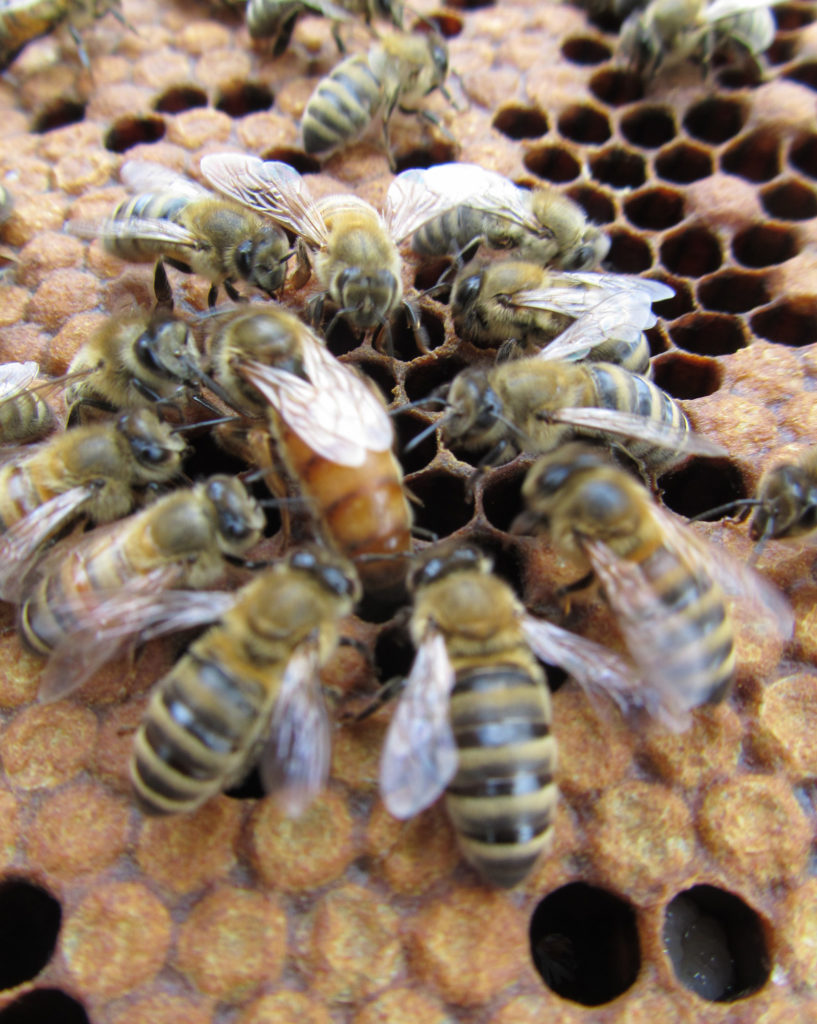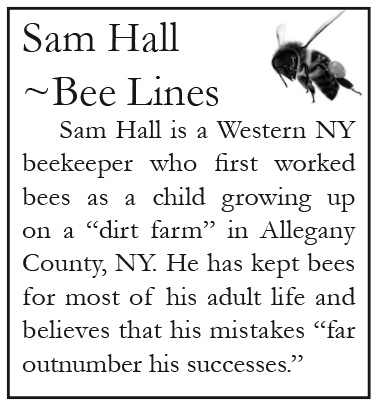Bee Lines
- By Sam Hall
Winter in the Bee Yard
The winter solstice is past and for some reason it causes me to start looking forward to the coming year more so than New Years. In about five to six weeks a mystical and marvelous thing will happen in the beehive. Around the middle of February the bees who have been clustered will start raising the temperature inside the cluster.
The cluster is a ball of all of the bees in the hive and the queen is at or near the center of the cluster. The bees will form a cluster anytime the temperature drops much below 45 F. The temperature in the cluster during the beginning of the winter is about 55 F, though depending on the location this may vary a bit. This temperature is achieved by the bees appearing to shiver. The shivering of thousands of bees in a ball creates the heat.
If you have seen videos of penguins, you will note that in extreme cold they form a circle and the inside of the circle is always working outward and the outside in, so that everyone gets some heat and some cold. It is the same in the bee cluster. The inside bees are working outside and the outside bees are working in.
In mid-February the bees will increase the temperature in the center of the cluster to around 90 F. The queen will then start to lay a great number of eggs. This is in the anticipation of having an adequate work force when spring flowers arrive. It takes 21 days from the time the queen lays an egg until an adult worker emerges.

Other things take place in February. The eggs will hatch in three days and the resulting larvae will then need to be fed. In the normal scheme of things, this feeding is done by the youngest bees that are aptly called nurse bees. Since in February there are no young bees in the hive, the remaining bees are about 6 months old, way past the age of normal nurse bees. However, nature has given these elderly bees the ability to revert to nurse bees. It is perhaps like grandparents raising grand children.
If you have bees living near you either in a hive or in a tree, on sunny days when the temperature is in the 40s or higher and there is little or no wind, you may see the snow around the hive covered with yellow matter. This is known as “yellow rain”. The bees will not defecate in the hive and so will take the opportunity to relieve themselves, sometimes for the first time in many weeks. Often alarming to new beekeepers, a number of the bees that come out die in the snow, some because they are too weak to fly back in and some because they may be ill and do not want to contaminate the whole colony. These can number in the hundreds and it is normal. It is the survival of the colony that is important not the survival of an individual bee.
So often we take for granted the gifts of nature and, since they are free in a capitalist society, we feel they have no value. I remember a friend some years ago that thinned out his daylily bed and put the culled bulbs by the street with a sign “FREE”. No one took any. He made bunches of them and put a sign $5/bunch and he got rid of most of them.
Since it is spring, try to plant a tree.
If that is not possible just don’t step on that ant.
